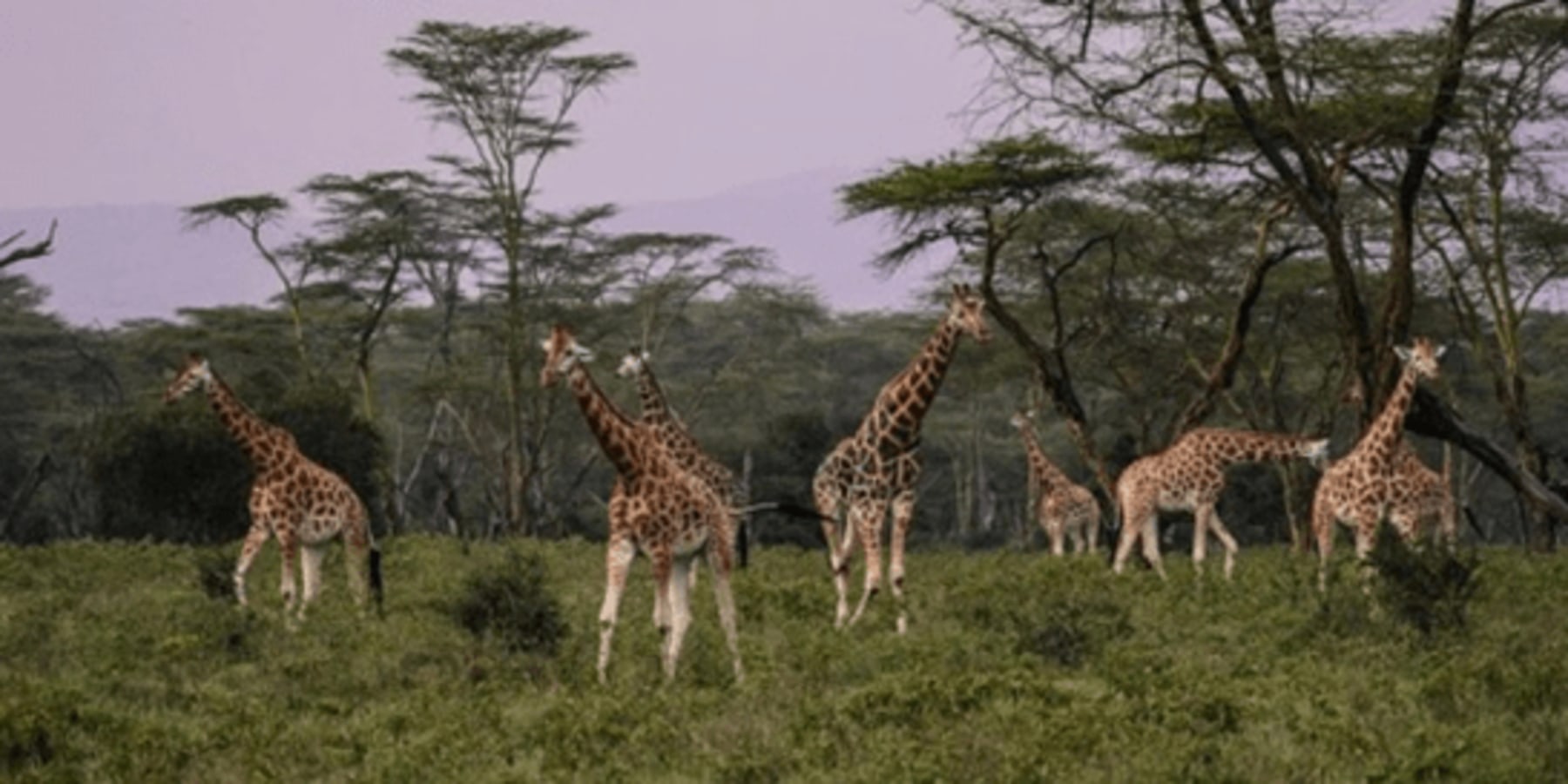
On the floor of the Great Rift Valley in Kenya, there, amid the wooded and bushy grassland lies a splendid soda lake popularly known as Lake Nakuru. Adored with ecological diversity, a variety of flora and fauna have made this beautiful escarpment their home. Now Lake Nakuru National Park is one of the most exquisite nature attractions in Kenya attracting both local and international tourists.
Located south of Nakuru country but with close proximity to Nakuru town, the lake is elevated 5,755 ft. above sea level and lies about 164 kilometres north of Nairobi. Its name Nakuru stems from the Maasai language meaning “Dust or Dusty Place”. The Lake Nakuru National Park connects to Lake Soysambu Conservancy to the southeastern border, representing the only remaining wildlife corridor to Lake Naivasha.
The park has gained international stardom as the greatest bird spectacle on earth, with over two million flamingos docked at its shores. The abundance of algae attracts a vast number of flamingos that famously give the lake a pinky grow. Apart from the famously large pink flamingos, over 450 bird species including the African fish eagle, Goliath Heron, Verreaux's eagle, hamerkop, Pied Kingfisher among others. It is truly a haven for bird watchers.
Other mammals including eastern rhinos, white rhinos, hippopotamus, warthogs, baboons, waterbuck, and buffalos also flourish here. The common predators are lions, cheetahs and leopards, with the latter having increased sightings in recent years. Also of interest if the fenced-off sanctuary to protect the endangered rhinos and Rothschild’s giraffes.
The park also hosts large sized pythons found in the dense woodlands and can often be seen dangling on trees or crossing the road.
As a visitor, the perfect spot to have a good lake view is on Baboon Cliff. The park also makes perfect adventures in picnicking, game drives, wild photography, bird watching and nature walks. You adventurous couples, this is a great place to honeymoon. And if you are lucky to visit in September, with will enjoy the Cycling with Rhino Event, a community biking event in the wild organized to raise funds for rhino conservation and protection.
The Lake Nakuru National Park won’t only reward your wildest expectations, it will set you into an adventurous mood you have never known before, and maybe you will never experience again. It is a land of many wonders, each smoothing your spirits to nirvana as the waters of Makalia falls softly roars.
Fact File
Climate:
The Altitudes of the lake make the park colder than you would expect considering it is very close to the equator. The temperatures are mild during the day although the nights may be colder. Pack a warm suitcase.
Attractions:
Flamingo: these are the greatest identifier of the part. But other water birds including a variety of terrestrial birds, there are around 450 species in record.
The Big Five: you have a high chance of sighting lions, leopards, white rhinos, hippos, and waterbuck among others. There are over 56 different species of mammals living here.
Unique Vegetation: Lake Nakuru National Park boasts over 550 different flora species including the largest euphorbia forest in Africa, the yellow acacia woodlands and picturesque landscape
View-Points: Out of Africa, Baboon Cliff and Lion Hill.
Hills- Honeymoon, Lion Hill Ridge, Enasoit among others.
Waterfalls: Makalia
Community and Conservation Events: Cycling with Rhino annual event in September.
Park Activities:
Bird Watching, Camping, Game Drives, Photography, Scenic
Accessibility:
Shanjoy Tours organise safari transfers by road or air. The most commonly used route is the Main Gate locate 4 kilometres south of Nakuru town.
You can also enter the park through Lanet Gate along Nairobi- Nakuru highway. Nderit Gate also offers access from Masai Mara and Elementaita parks.

